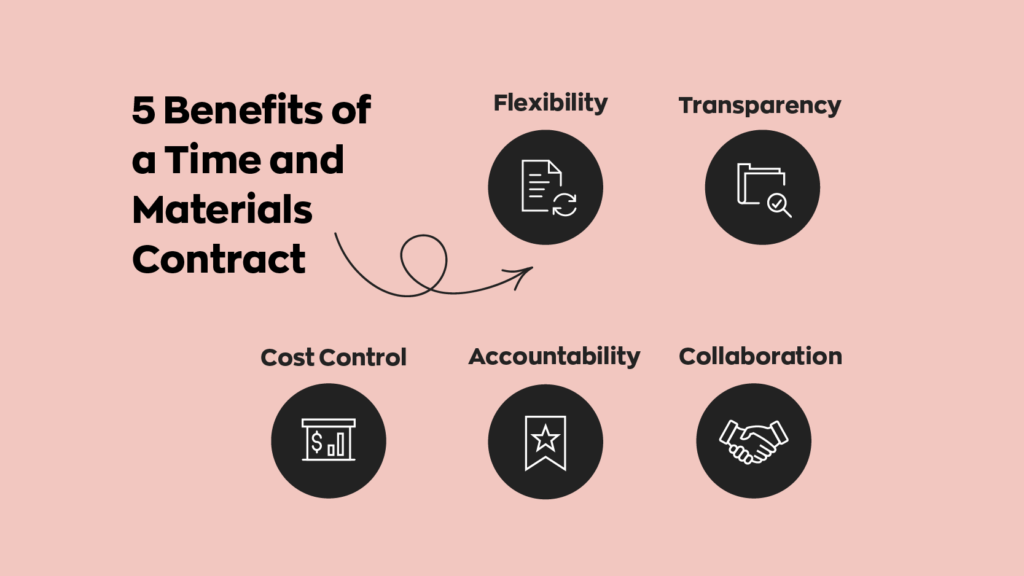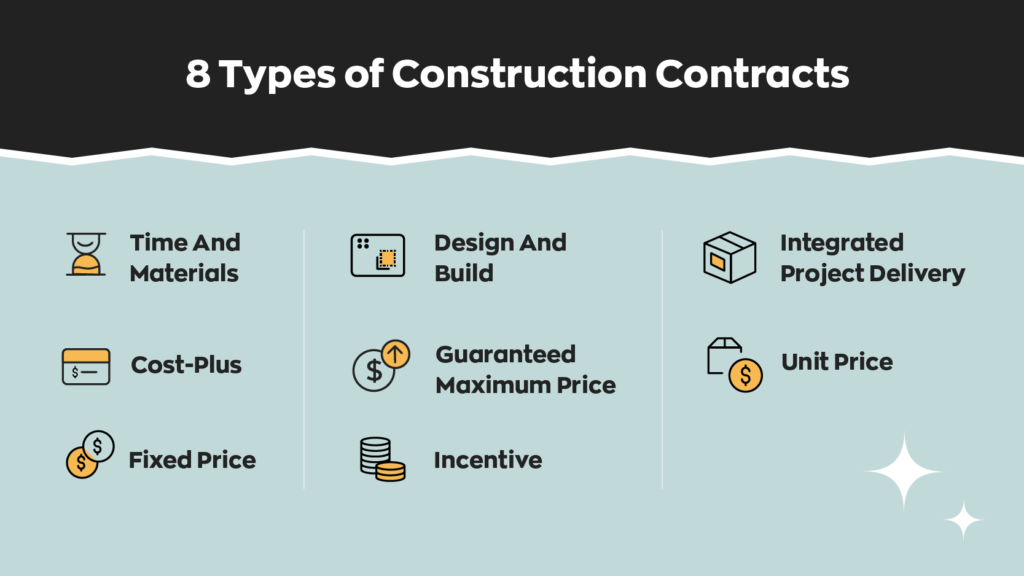If you’re a contractor working in field services, chances are you could benefit from a time and materials contract– also known as a T&M contract. These contracts protect you and your client, allowing for better cost control and transparency. However, ensuring you’re using a properly structured contract is crucial to avoid misunderstandings. Keep in mind that this is a legal document. If either party missteps, there could be legal ramifications. If you’re even slightly unsure about anything, it’s a good idea to contact a legal professional.
Today we’ll be talking all about time and materials contracts. What they are, why they’re important, what they should include, and so on. In addition, we’ll also provide a time and materials contract template for you to download, use and modify however you’d like.

Please note that inFlow does not assume any responsibility for any circumstances that may arise using this template.
What is a time and materials contract?
If you already know what a T&M contract is and you’re just here for the time and materials contract template, you can skip the next few sections. For the most part, a T&M contract is exactly what it sounds like. It’s an agreement between an independent contractor (colloquially known as freelancers)– this could mean a plumber, an electrician, or any variety of trades– and an employer. The employer agrees to pay the material cost, as well as a set rate for the labor involved.
This sounds simple, but as with many legal documents, there’s some fine print you need to be careful with.
The T&M meaning may change depending on the work, but the contracts themselves tend to include the same things.
How does a T&M contract work?
Unlike many other work contracts, a time and materials contract typically defines a clear end product. This is because employers generally use time and materials contracts for one-time costs or infrequent recurring costs. Think things like electrical work or startup costs. Because work of this nature has a lot of things to consider, the process is usually left undefined. This ensures that the client gets what they need and that the contractor receives fair compensation for their work.
What should a time and materials contract include?
Generally speaking, a time and materials contract has two main components: an hourly labor cost and a materials cost. For example, let’s pretend that you hire an electrician to repair and replace some wiring in your business’ building.
Let’s say you agree to pay the electrician at a rate of $50/hour until the project is complete. Let’s also pretend that the material cost comes out to $200 worth of cables. Finally, once everything is complete, let’s pretend it took the electrician 20 hours to complete the project.
Twenty hours of work at $50/hour comes out to $1000 for labor costs. Add another $200 for materials, and the final price should be $1200– right? Not quite. In a time and materials contract, there are a few stipulations that you would usually include under these two “main” components.

Materials markup, maximum labor hours, and not-to-exceed (NTE) clause
First is a materials markup. This might seem counterintuitive– why would you pay more than the materials cost? It’s because the independent contractor usually sources the materials on their own. Finding the correct materials takes time, and it’s only fair that they’re compensated for that time. Markups typically range from 15% to 35% and include any shipping costs.
Next is maximum labor hours. As the name suggests, this stipulates a cap on billable hours the contractor can charge. This protects the employer from runaway costs.
Last but not least is a not-to-exceed (NTE) clause. This is similar to maximum labor hours. When the project’s cost reaches a particular milestone, the contractor must stop work. This lets the client know the highest sum they could pay beforehand.
Going back to our example, let’s pretend that the time and materials contract included a materials markup of 20% and stipulated maximum labor hours at 18. That adds another $40 to the materials cost but lowers labor costs to $900 (only 18 of the 20 hours are billable).
Download our free time and materials contract template
When should you use a time and materials contract?
We mentioned before that it’s best to use a time and materials contract for one-time and recurring costs that are few and far between. On top of that, they’re helpful for projects with an uncertain timeframe. They guarantee that the project will be finished and that the contractor will receive compensation for their work.
Still, it’s useful to understand why businesses use T&M contracts in situations like these.
Perhaps most importantly, it’s expensive to keep employees on payroll. If they work full-time, you’ll have to provide benefits on top of wages. This might not be the case with part-time workers, but those positions still add another layer of bureaucracy to deal with. Time and materials contracts smooth out the onboarding process, making it easy to get specialized work done when necessary.
A time and materials contract also tends to be narrow in scope. Because the responsibilities in a T&M contract are more specific, it’s easier to find someone who meets the requirements. This, in turn, makes it easier for businesses to draw from more specialized talent pools.

Disadvantages of a T&M contract
While a time and materials contract offers many benefits, there are disadvantages.
The most significant disadvantage is that the end cost can be far higher than initial estimates because there’s no set price. This is why including a not-to-exceed clause can come in handy. However, if you’re on a tight budget, you may want to consider using a fixed-price contract.
A level of trust is also necessary for a time and materials contract to work. While there are methods to track materials used and billable hours, verifying these factors takes time. Maximum labor hours and NTE clauses help alleviate this but can also make the process more difficult.
Finally, the level of involvement required differs on a case-to-case basis. While a T&M contract usually allows for a more hands-off approach in some situations, that’s not always true. If a T&M contract requires a more hands-on approach, the situation’s complexity may cause issues elsewhere. Make sure a time and materials contract is really the correct choice before taking any action.
How can inFlow help?
A big part of using T&M contracts efficiently is accurately estimating a project’s scope. After all, how can you make a contract that is both realistic and fair if you have no data to go off of? By using field service management software like inFlow, you can better track your materials from past projects, which will help you with future projections. Another important aspect is managing and monitoring multiple job sites at once. Our software tracks materials used over multiple job sites simultaneously, letting you accurately bill clients hassle-free.





0 Comments